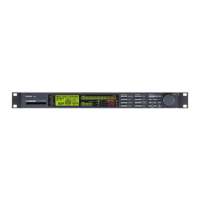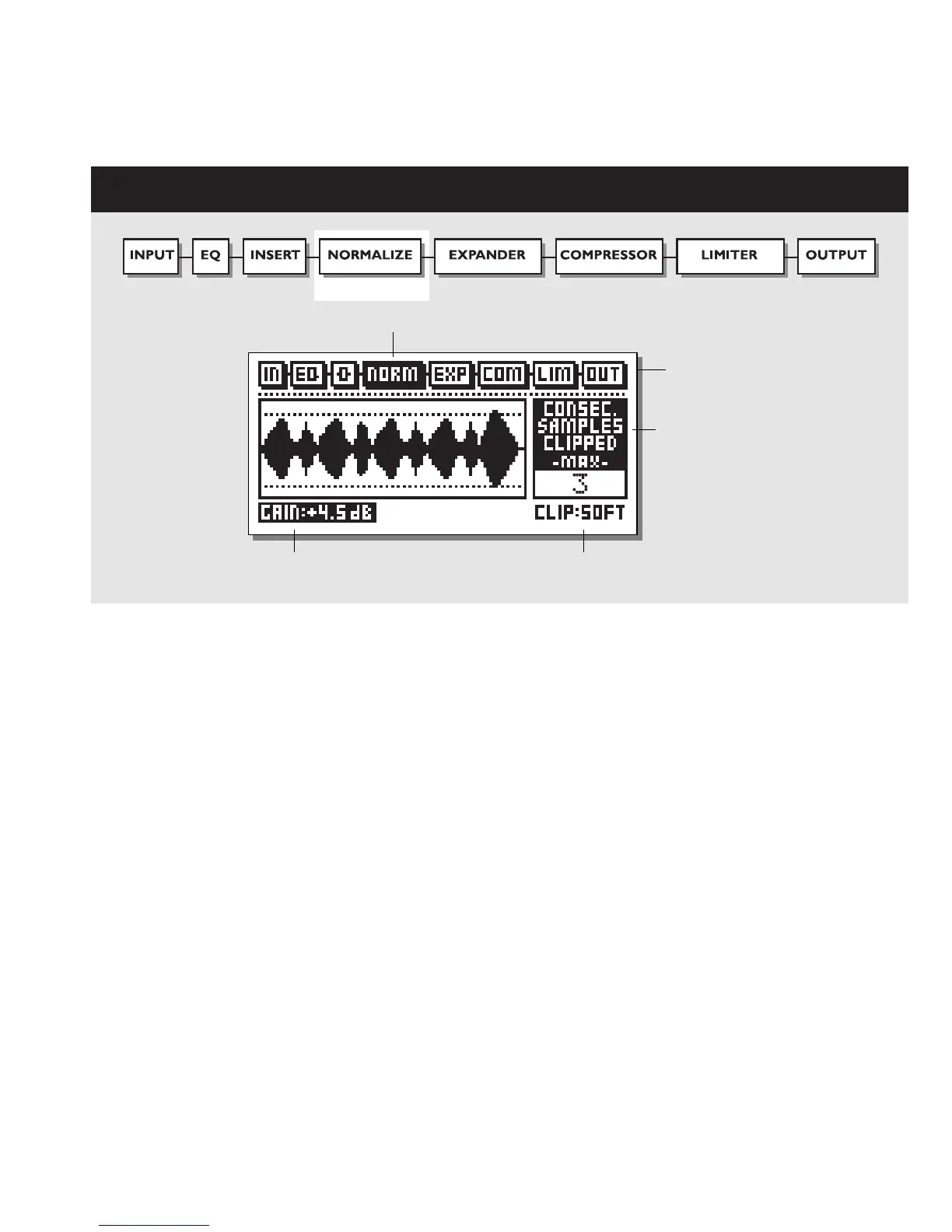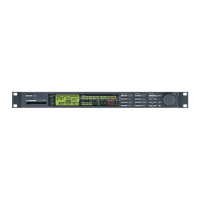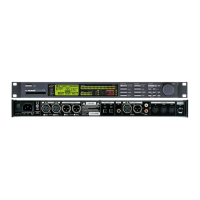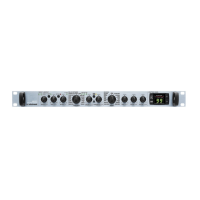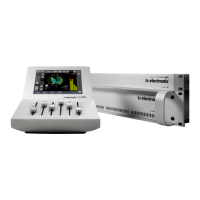19
MAIN PAGE Normalizer
Effects blocks
Black box indicates selected block
No. of consecutive
samples clipped.
Normalizing gain
Clipping method
Normalizer
Optimizing the level of your material starts in the Normalizer.
Here you have a graphical presentation of the incoming signal, shown as 1 second pictures.
By increasing the gain, you decrease the headroom, shown as two dotted lines.
You should set the gain such that the signal peaks are just hitting the dotted headroom lines.
The Normalizer is capable of gaining +18 dB.
The Clipper
The Normalizer has a build-in limiter, which can be either soft or hard. When the Normalizer limiter is active, it is indicated on the
Normalizer LIM LED above the Input Meters.
The Clip Counter indicates the maximum number of consecutive samples clipped within the last second.
If the clips only occur occasionally, and only few samples are clipped per test interval, you do not necessarily have to reduce the gain of the
Normalizer.
